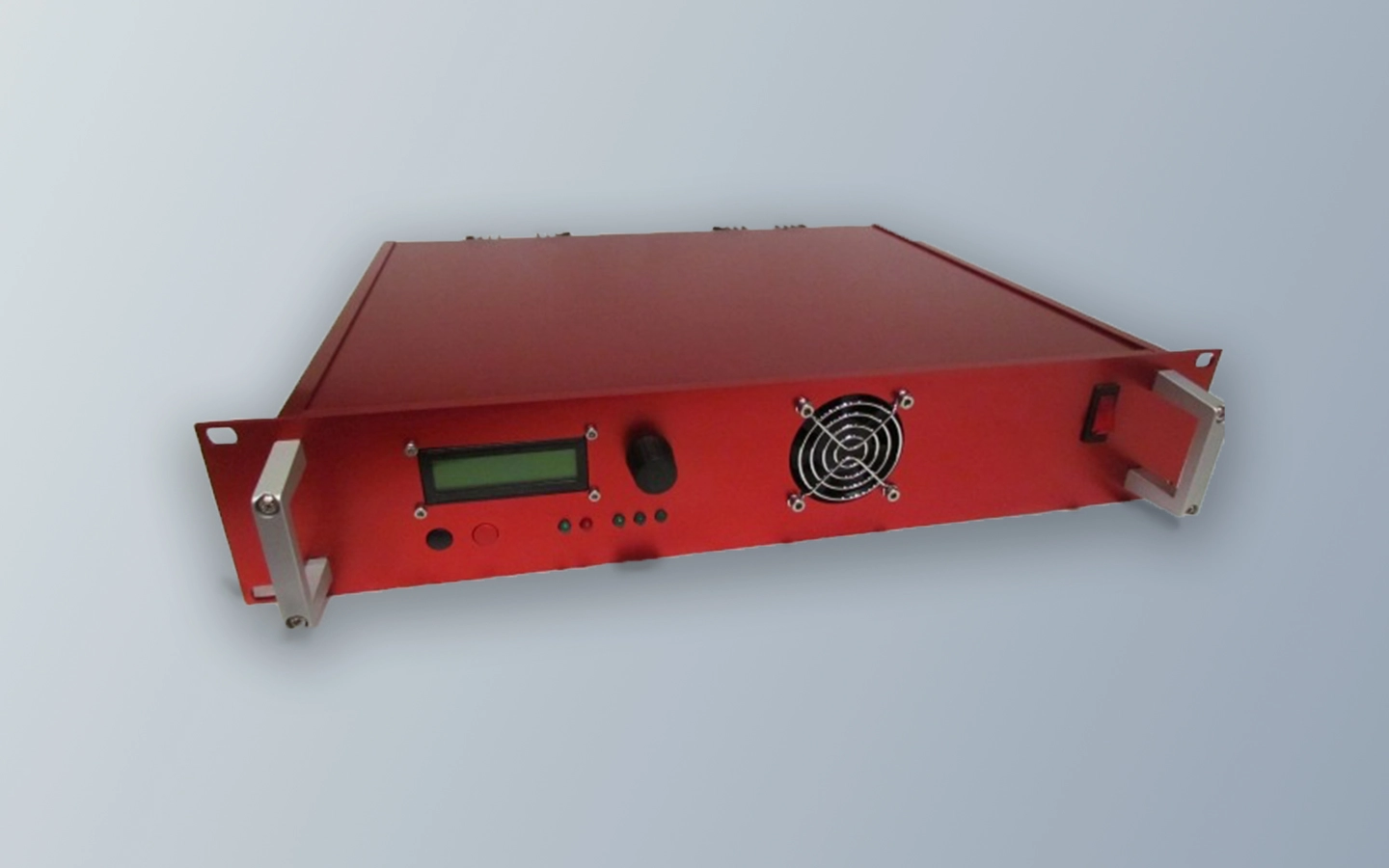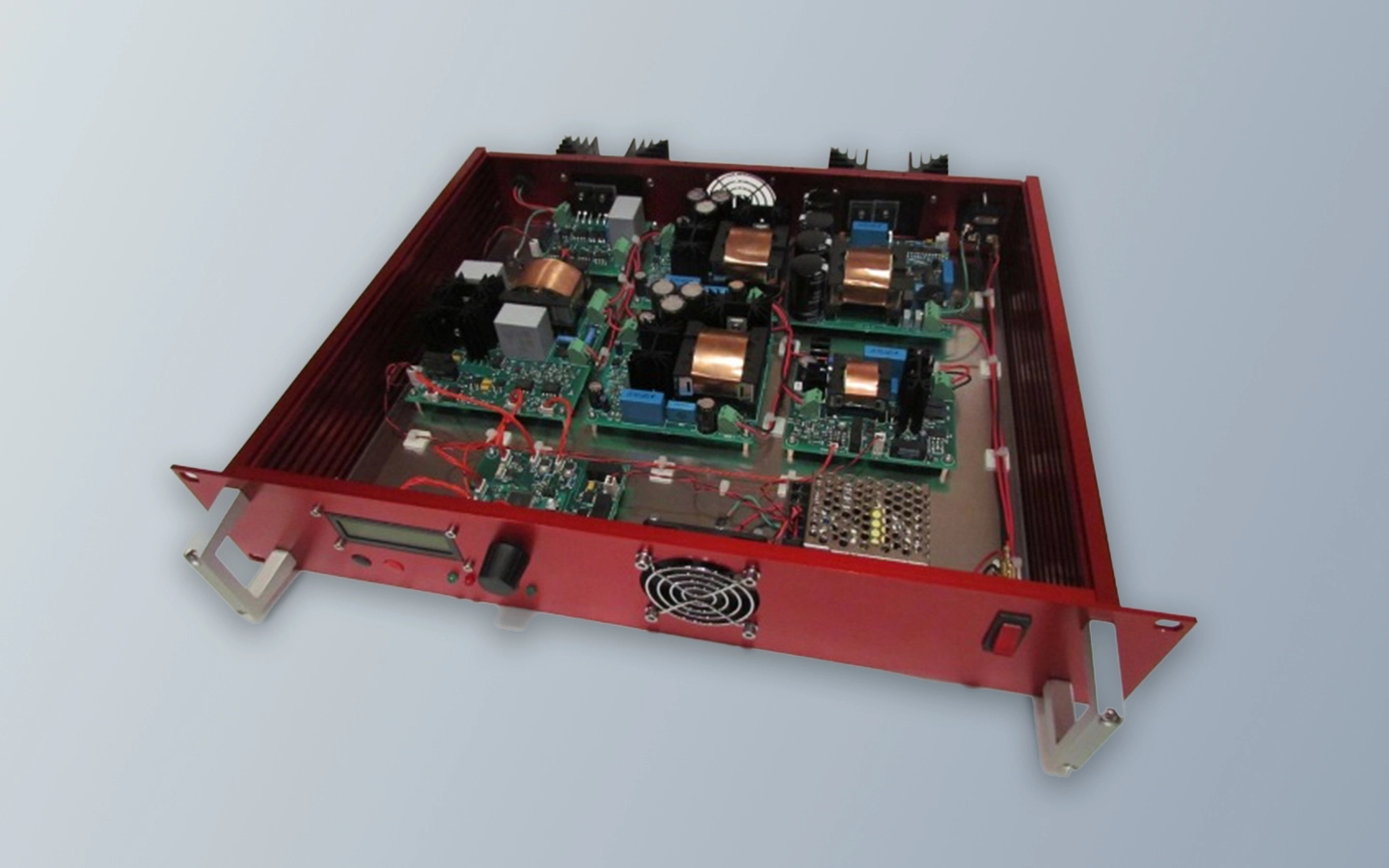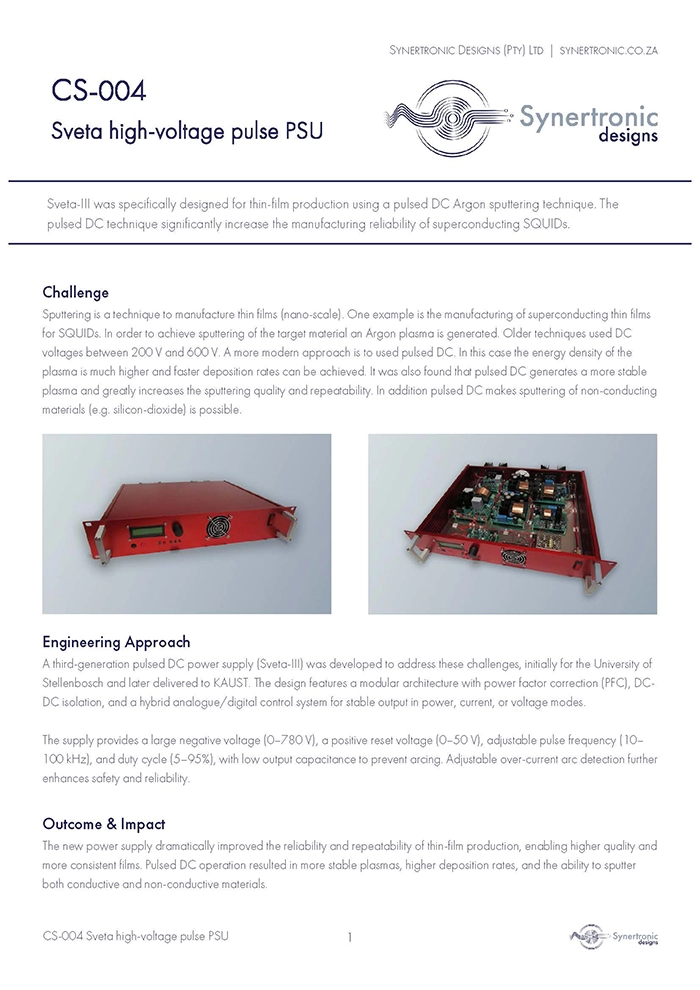Challenge
Sputtering is a technique to manufacture thin films (nano-scale). One example is the manufacturing of superconducting thin films for SQUIDs. In order to achieve sputtering of the target material an Argon plasma is generated. Older techniques used DC voltages between 200 V and 600 V. A more modern approach is to used pulsed DC. In this case the energy density of the plasma is much higher and faster deposition rates can be achieved. It was also found that pulsed DC generates a more stable plasma and greatly increases the sputtering quality and repeatability. In addition pulsed DC makes sputtering of non-conducting materials (e.g. silicon-dioxide) is possible.




